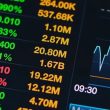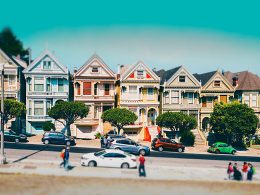by Clifford Asness, Ph. D. AQR Capital Management, Inc.
Source: AQR and Bloomberg.
Nothing looks quite as dead-on 50th percentile as equities. But we’re looking for extremes and the overall picture across markets doesn’t show that. Bonds came in relatively low on all three realized risk/variability measures (that is, 2016 was calmer than the median year from 1990-2016).
1
1
Close
This defies many people’s intuition but there might be a good reason why bond volatility in 2016 was well below historical levels: many fixed income models posit that moves tend to be smaller when yields themselves are lower. Perhaps adjusted for that, 2016 would look more surprising. That is, perhaps moves were big in 2016 compared to an average year starting from such low yields (unfortunately, that is difficult to test for empirically, given there are not many historical observations of yields this low). Nonetheless, the absolute volatility of returns, which is what our unadjusted measure gets at, is still what ultimately impacts investor portfolios, and is therefore worthy of attention.
Commodities were the one asset class that showed above normal risk/variability in 2016. Could the (moderately) elevated commodity risk be the piece of evidence that the “2016 was crazy” camp was searching for? Should elevated risk in one asset class count as crazy for markets in general? We think the answer is a definite no. If you look in enough places, you’d expect to see a couple of large or small observations – without anything being abnormal.
2
2
Close
In fact, if one ran 100 tests on a normally distributed variable, one would expect to see 5 “statistically significant” results, even in the absence of any true relationships. Reading too much into the most extreme results from multiple tests is a pitfall known as the multiple comparisons problem – one of several ways to lie with statistics, along with over emphasizing spurious correlations, or plain, old-fashioned making numbers up.
Anyway, even for commodities we’re only talking about measures at or around the 70th percentile. If we start calling the 70th percentile wild and crazy we’re going to have a lot of wild and crazy! Finally, the dollar was calmer than normal on all measures, and the VIX was just about at the median (perhaps not surprisingly mirroring the equity index it’s based on – though Cliff received many questions suggesting that maybe the “vol of vol” was crazy even though equities themselves were not).
Bottom line, we still can’t find evidence of really crazy financial markets at the asset class level, and markets were even less compellingly crazy when you consider the whole set of five we examined.
Appendix: A more recent comparison (for those who insist…)
Comparing 2016’s risk to just a 5-year history (below) also appears fairly mundane. We see some very limited evidence of an elevated previous year’s high over low metric, as we did in equities, but still no readings above the 70th percentile. Moreover, if we use annualized volatility as the measure of risk, compared to the same 5-year history, four of the five markets are almost exactly at their historical median (between 46 percent and 56 percent) — a remarkably strong vote in favor of business-as-usual (perhaps even worthy of the “amazingly normal” tag Cliff used in his post). Finally, on the “max one-month move” metric, the DXY was perhaps surprisingly low (comparing to the 5-year history, but also the longer sample). Do people write notes about within-year market gyrations when they are surprisingly low, and just for one asset and metric?
Historical Percentiles of Risk Measures by Asset Class since 2012
This post was originally published at AQR Capital
Copyright © AQR Capital













